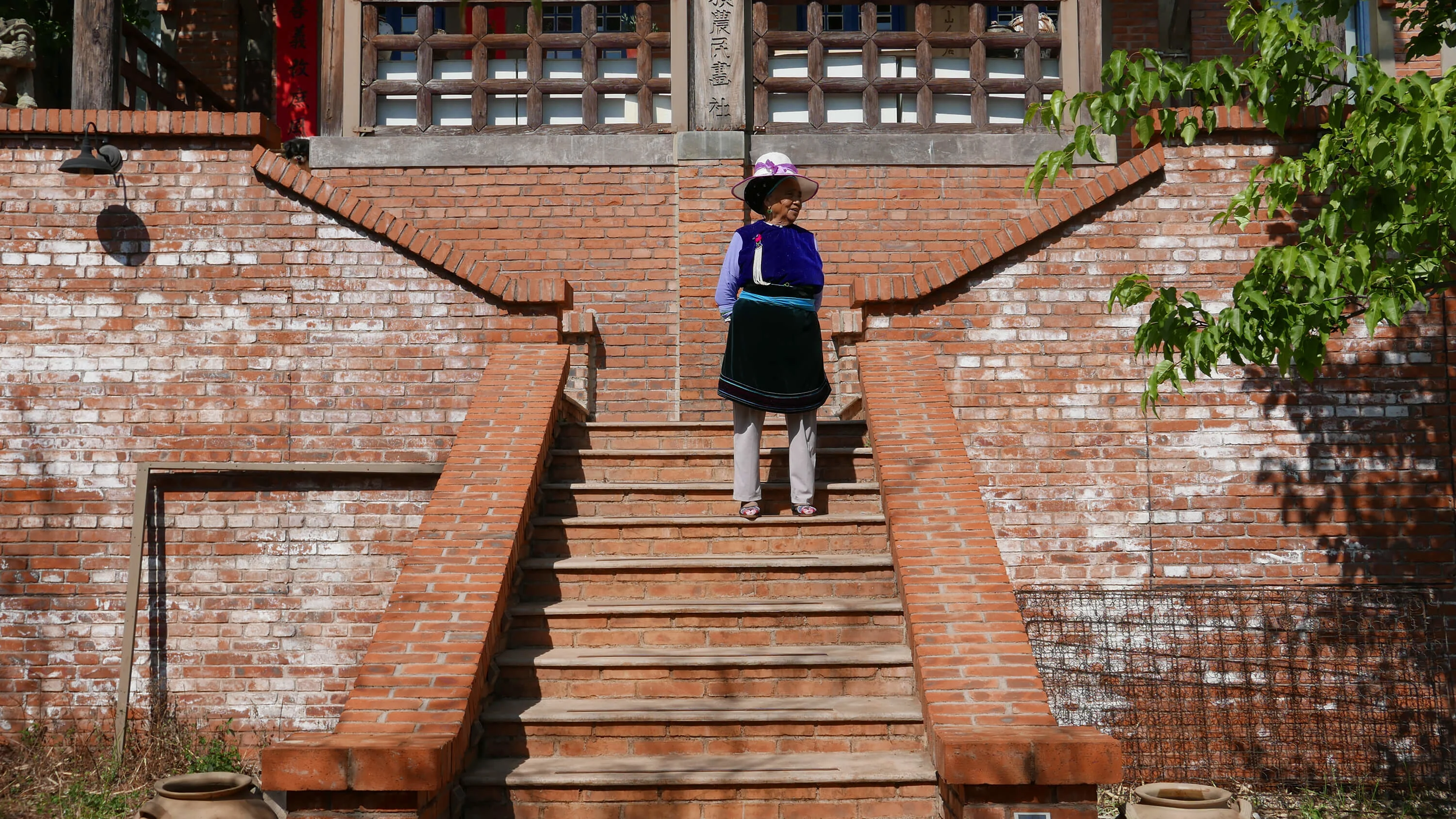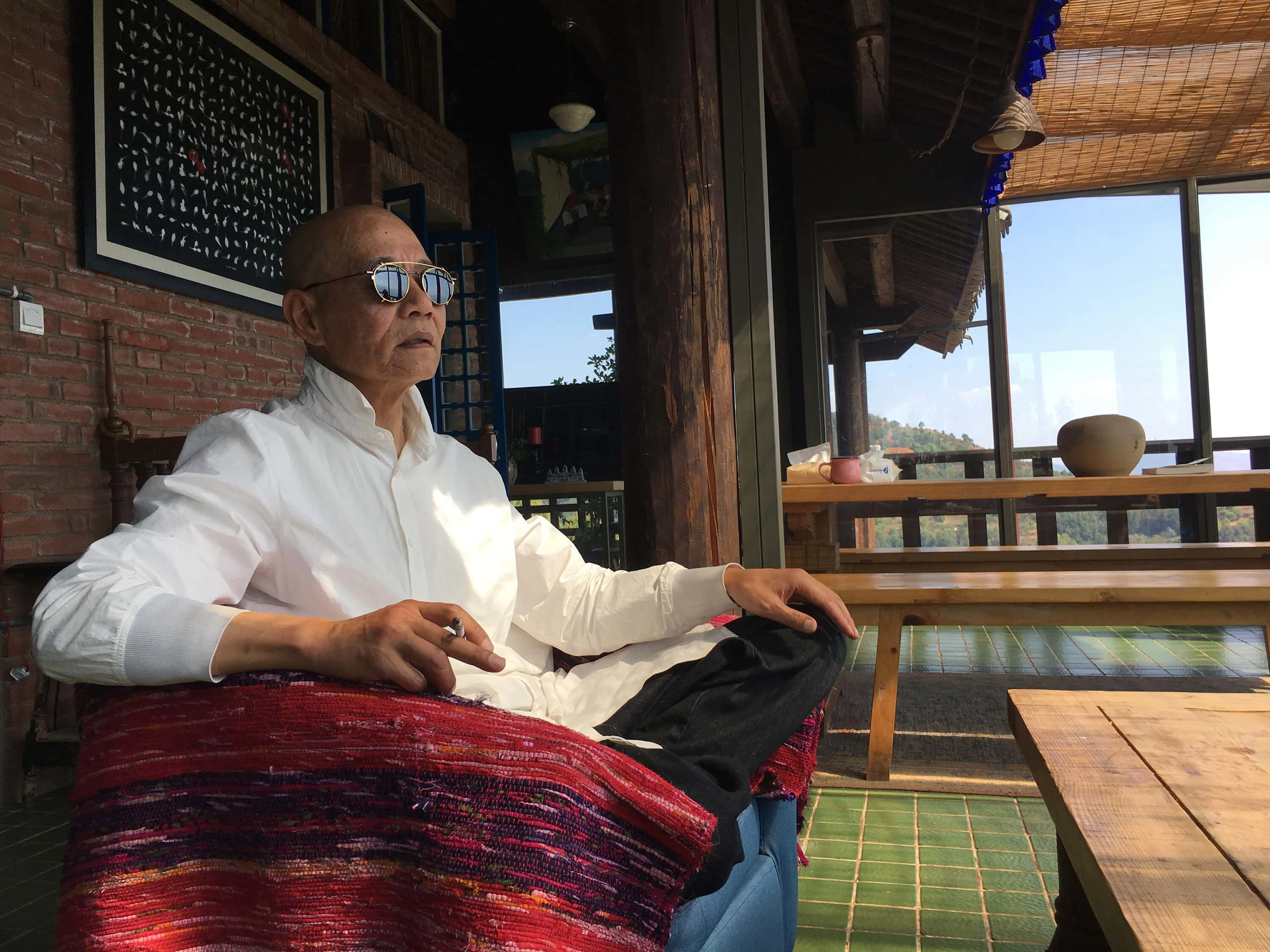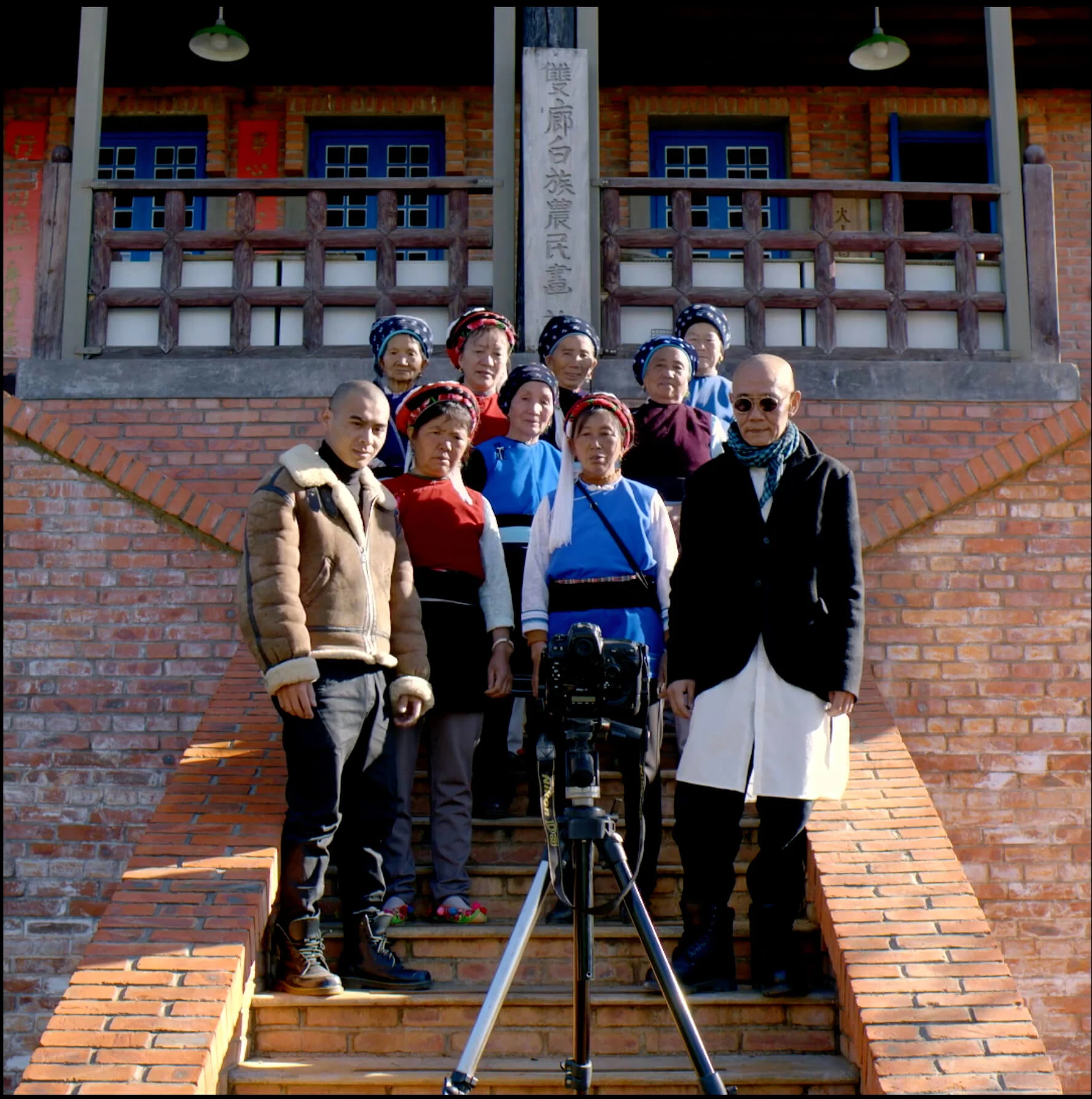

Shen Jianhua was a relatively unknown painter from Shanghai when he moved with his family to a breathtakingly beautiful village in the Chinese countryside. Impressed by the locals’ craftwork, he opened a painting school where every day he teaches art to the villagers (many of whom are elderly women).
Now the subject of a documentary, Up the Mountain by director Zhang Yang, Shen’s life is being brought to international attention. Jaime Wolf went to Shuanglang to talk color, composition and cows…
With his long silk shirts, green-tinted mirrorshades and the hand gestures which accompany his speech forever drawing wispy trails of cigarette smoke about his clean-shaven head, the painter Shen Jianhua cuts a striking figure, the incarnation of a steampunk Chinese sage.

In Shanghai, where he was born and later studied at the Shanghai Academy of Fine Arts, the 63-year-old Shen was an independent painter and curator. Though exhibited internationally in group shows, he rose to no special prominence amid China’s art-boom of the 1990s and 2000s, and in 2008, when both his wife and young daughter began to have health issues, he moved the family to Shuanglang, a rustic village that dates back more than a thousand years. Part of the UNESCO Heritage area of Dali, in Yunnan Province, Shuanglang sits in the southwestern edge of China, near Myanmar and Tibet.
A place of extravagant nature and placid beauty, populated by the ethnic Bai minority, Dali was a hippie-backpacker destination for many years, and during the past couple of decades, many members of China’s creative classes have established second homes in the region.
Growing up during the Cultural Revolution, Shen had been sent to the countryside with his parents to live among farmers, and so Shuanglang felt familiar. A practicing Mahayana Buddhist, he was also in tune with Bai spiritual traditions, an unusual blend of Buddhist, Taoist, and Chinese practices, with each of Dali’s villages paying tribute to its own Benzhu, or local god.

Impressed by the use of color in handmade Bai textiles and embroidery, Shen began offering painting classes to his Shuanglang neighbors. Every day, students between the ages of 50 and 85, many of them wizened grannies carrying grandchildren on their backs, walk up the mountain to his house to paint.
His first student ten years ago was Wang Bin Xin – a 75-year old midwife who asked Shen’s help with local officials to collect her pension. Despite having delivered “thousands of babies” her pension was just 50 or 60 renminbi, about $8 a month. “I can teach you to paint,” Shen told her. “’And if you sell one painting, it will equal ten years’ pension.”
Bin Xin was worried she couldn’t paint, so Shen told her to ask Guanyin – the goddess of mercy, a figure revered across Chinese folk traditions, Taoism and Mahayana Buddhism – if it was ok for her to learn. This has become a ritual all new students go through before they start learning from Shen (Up the Mountain includes a scene of this initiation).


Though Shen’s work is formal and conceptual, with nearly every piece involving layered color fields, and referencing the Heart Sutra or other Mahayana practice, his students turn out bright, multi-colored figurative paintings of Dali’s landscapes, Bai festivals and scenes from their own lives with a naïve quality reminiscent of western folk and outsider artists like Howard Finster and William Traylor.
Periodic exhibition of this work organized by Shen results in an income that far outstrips any pension his elderly students could get from the Chinese government: paintings sell for between RMB 8,000 and 80,000 (8 is an especially lucky number in China). The proceeds are split 50/50 with Shen and many are sold online; the 80,000 RMB sale was a five-panel painting with each panel depicting the Benzhu (village god) of the different villages around the Erhai Lake.
Five of the past seven years, he’s taken his students on tour to five different cities, publishing handsome catalogs of their work.



On his aesthetic philosophy
The most important thing to me in making art is the zen concept Wu: to have nothing in my mind. Emptiness, and isolation allow me a deeper view of what is in my mind.
The work is my own language, my own expression, and my own statement. In art, what is most important is not to express emotion, but your mind state. The act of painting can be a product of illumination, or the cause of it. The goal is for a viewer to change their mind as well.

On moving to Dali from Shanghai
There is a famous question in Buddhism: “Why did Damo come from the west?” This question has many answers, but my favorite is, “Sit too long, it becomes a habit.”
The material in Dali is different compared to the city. Every day, I face the mountains and the goats. I’ve incorporated dried-out tadpoles, and silkworm dung, and rabbit pellets into my paintings; I use them to write Om mani padme hum, and the Heart Sutra on the canvas.

On how he knew the Bai could paint
It’s in their color sense. They have traditions: embroidery, tie-dye, shoes, all with lots of color, pretty flowers, beautiful patterns. There is no difference between their work in the field or doing sewing work: the soil is red, the sky is blue. It’s natural. Long ago, when people lived in caves, there were three things: singing, dancing, and painting. You know how to do it. Science and mathematics are like peeling an orange. Art is like cracking a walnut: apply pressure and then it opens.


On how he selects students
Anyone who asks for instruction, I say yes. My original students are still the best. Wang Bin Xin, who is now 85, has been painting here since 2010. Zhao Xin Lian, who is 55, started seven years ago. She works in my house, cooking and cleaning. She saw Bin Xin and thought it was interesting. She wanted to learn, but she was too shy to ask me. Instead, she asked my daughter if she thought I would accept her. Neither of them can read or write – they learned to write their names so they can sign their paintings.
One of Zhang Pei Xin’s paintings shows goats and a goatkeeper. The goatkeeper became one of my students, he made a sculpture of a goat that is outside in my yard.
Today, I have 13 students. There are four younger ones from the village – they’re more difficult to teach because they have more information from the modern world and you have to erase what they already know. One of them is just ten years old. He hasn’t learned much yet.

On how he teaches
I call my method “teaching without teaching.” If you want, you can explain how to mix color in a way that is complicated and boring. Instead, I place tubes with all the different colors of paint on the rungs of a stepladder. Students can see them lined up and choose for themselves, like choosing thread for embroidery.
I try to avoid a lot of language-based teaching. For painting there are three things: color, the figure or shape, and composition.

Some years back, one of the ladies said, “I don’t know how to draw a cow.” So I bought some fast-drying clay from Germany, and asked students to mold the cows in three dimensions. I wasn’t teaching them how to draw, but they understood, and by molding it, they learned the proper shapes and proportions.
I tell them, “You want to tell a story. Then when you paint your painting, the story
is in your mind, and you illustrate it.”
A lot of time, they make the landscape, and then they draw many small figures, cut them out and paste them onto the canvas. This gives more control over the composition.
I’ve been doing this for almost ten years. Every time, the students’ artwork is surprising. That is what keeps me doing it: I discover the surprise, and that is my reward.

On the difference between Western art and Chinese art
In the west, they use painting to express their emotions. The Chinese use art to express their dream of life. One of Wang Bin Xin’s paintings illustrated an incident where she had to go up the mountain after midnight to help a woman who was giving birth. On her way back, she was riding a horse and fell off – in the original painting, she included herself falling, but then she revised it because people told her that falling from a horse is bad luck. Our culture is based on respect of other people and harmony: no one will paint an angry tree, a tree on fire, that sort of thing.
Photography by Jaime Wolf

